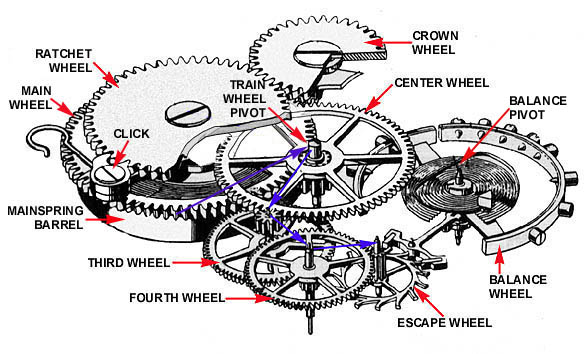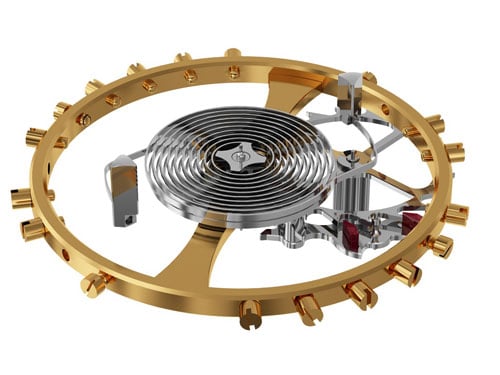I am blogging this post little late.
In my last post, I had explained about two important categories of wrist watches, i.e., Mechanical and Quartz based on the functionality. Mechanical watches can be further grouped into a) Hand Wound and b) Self winding or Automatic.
Lets learn today, how a Mechanical or Hand wound watch works.
Hand Wound watches to function, one has to wind the crown which in turn winds the Main Spring or Coil inside the watch movement. Once, this Coil is fully wound, then it slowly un-winds itself and sets the other parts in motion. This motion is converted in a controlled manner to show us time. Lets go into details.
The movement or "heart" of the watch consists of all the parts combined together tightly inside the case of the watch. However, the most important parts which drives the mechanical watch are:
1) Mainspring
2) Wheel train or Gear Train
3) Escapement Wheel
4) Balance Wheel
1. Mainspring :
The Mainspring or Main Wheel, is a long thin metal strip which is coiled. This Coil is connected to outside part called "Crown" through Crown Rod. When this Mainspring is wound fully through the crown & crown rod, it stores the power required for watch to work for long time. The storage capacity depends on the elasticity and the length of the metal strip used in the main spring. While some watches can store power for a day, some can go on for 6 to 8 days where more efficient material used.
Fig 1. Mainspring picture enlarged.

2. Wheel Train or Gears Train:
Wheel Train or Gear Trains are the series of gears which transfers the power coiled in the Mainspring to Escapement Wheel. These gears are divided into Hour, Minute and Second hand gears based on the functionality of the watch.
The power trapped in Main Spring is slowly released in a controlled manner through this Train of wheels. Each gear of the wheel drives the pinions of other wheels.

3. Escapement Wheel:
Escapement Wheel plays an important role in controlling the exact power to be released from the Mainspring through Wheel Train and passing the power to another important part called Balance Wheel. The power of the mainspring is allowed to escape by locking action. Each time when the power is released from Escapement Wheel, the Balance Spring oscillates back and forth with high speed and accuracy. Infact, the "tick" "tock" sound you hear in a clock or a mechanical watch is the result of escapement wheel permitting the wheel train or gear trains to release the power in cycles. This gives the motion required for the hands of the watch.

4. Balance Wheel :
Balance Wheel or Balance Spring is a oscillating device connected to Escapement Wheel which rotates back and forth being returned to its central position. Each oscillation of the balance wheel is controlled by the combination of mass and elasticity of the hairspring in it. It keeps the time between each oscillation very constant. This constant oscillation of Balance wheel allows the gear train to advance the moving second, minute, and hour hands forward.

All the above parts work harmoniously to produce time in a mechanical watch or a clock. Until 1970s i.e before the invention of Quartz movements, Mechanical or Automatic watches were very popular amongst the watch buyers. Though the Quartz watches are now very popular for their high accuracy and sleekness, the mechanical or automatic watches are making re-entry due to the craftsmanship and eco-friendly qualities involved in it. Some of the costliest Swiss watches sold now are automatic watches.
In this article I have endeavored to put it simply how a mechanical watch works. In the sequel next, I will try and explain how automatic or self-winding watch works. Till then request you to be patient..
Cheers,
M G Kamath
Hope, this blog was interesting to you all!. Please let me know
ReplyDelete